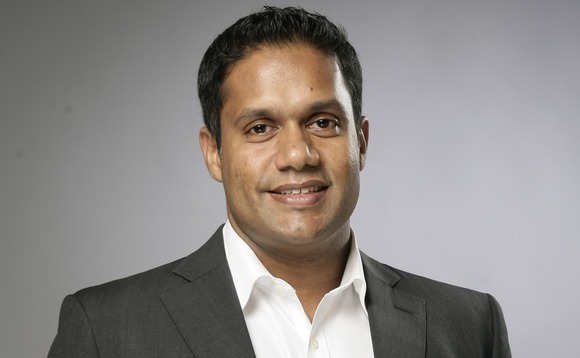
Q&A: Iron Pillar's Anand Prasanna

Anand Prasanna, a managing partner at Indian venture capital firm Iron Pillar, on building local companies that can be globally relevant, selling a GP stake, and the impact of COVID-19
Q: Iron Pillar manages one of the few domestic venture capital funds targeting growth-stage investments in Indian start-ups. Why did you launch a fund in 2016?
A: When I used to work in Hong Kong and China, some of the best investments I was involved in were mid-stage technology deals. Frankly, it was very difficult for us to raise Fund I because we were not marketing the thesis around early-stage investments in India consumer technology firms that everyone else was marketing. When technology companies scale, we want to be the ones who follow the Series A guys. We were also saying that a tech growth fund in India must be more enterprise-focused and has to involve investments in high gross margin businesses. We invest in companies built in India for global markets. None of this was popular. But, as a strategy, it has worked very well for us in Fund I.
Q: Why do you believe that enterprise software gives India VCs more bang for their buck?
A: On average, enterprise software companies raise half as much money as consumer tech companies before becoming a unicorn. You're also getting revenue in US dollars. As a dollar–based fund, we have to pay an unofficial "rupee tax" because of currency depreciation, which we can avoid. The other problem is dilution – consumer technology companies require many more rounds of capital. The exit market in India for enterprise start-ups is also better. It's easier to sell these companies because they have intellectual property, steady revenue, good margins and interested global buyers. For consumer technology, exit opportunities right now are limited. It's difficult to get exits within India unless there's a global strategic or secondary buyer and it takes a long time to IPO. If you look at the global enterprise SaaS [software-as-a-service] space, IPOs in the last two years have done very well. For example, Zscaler, a company built from India, is up 516% since its 2018 IPO on NASDAQ.
Q: Iron Pillar recently sold a stake to US-headquartered investment firm Nitya Capital? Why?
A: I have known Nitya Capital founder Swapnil Agarwal for 13 years. He left Hong Kong to return to the US and built an asset management firm that now boasts $2 billion under management. A large number of his investors are Indian diaspora individuals who have done well in the US technology sector – an entire generation of people who have built companies, worked as CEOs, and many are still leading firms. We are tapping into this diaspora network to find advisors, mentors, and co-investors or open doors at some of the biggest companies in the US for our portfolio. Also, Nitya is headquartered in Texas, which is the second-largest technology hub in the US after Silicon Valley where we already have a partner. By making Nitya an equity partner, we seek to ensure long-term alignment of our networks to help Indian tech companies grow in the US.
Q: How do you identify Indian start-ups that might be relevant globally?
A: We look at three things. First, are you potentially relevant in a multi-billion-dollar market? We don't do niches. Second, do you have a high gross margin? We define this as above 60% for enterprise-facing companies and above 30% for consumer-facing ones. Third, if you are actually in a very large space with a very large gross margin then you need to aim to be number one by growing fast, above 100% a year. That's where our growth capital comes in.
Q: What are the typical characteristics of Indian enterprise technology start-ups you support?
A: The most important cost in software development is people. The typical entrepreneur we back is somebody who has already helped build a billion-dollar company in the US, perhaps as a CXO or a vice-president at the likes of Google, Microsoft, or Adobe. If that person happens to be an Indian, the product team is often sitting in India. This is partly due to lower engineering costs – but you must not compromise on quality – and lower sales support costs. We open doors for them. We come with a global network of 500-plus CXO-level connections all the way from Japan to the US. My partner Mohanjit Jolly sits in the Valley and I operate around Asia and the Middle East helping our companies grow.
Q: How do you know if these companies can match up to their competitors internationally?
A: Back in 2003, I was involved in penning a McKinsey & Company report commissioned by NASSCOM [the National Association of Software and Service Companies] that predicted India's technology outsourcing industry would be worth $100 billion by 2020. We received a lot of criticism. Today, that number is likely $350 billion and that's just a small part of total outsourcing. Five of the top nine global software outsourcing companies hail from India. This occurred not only due to cost competitiveness, but also rising levels of quality. In fact, things changed so much that traditional software companies like Microsoft had to open large offices in India to be globally competitive. As software increasingly goes to the cloud, many will have to move cost centers to India or high-quality Indian companies with higher margins due to a lower cost structure in India will out-compete them. Our bold prediction is that every SaaS company in the US will need to have an Indian development center by 2030.
Q: For software companies leveraging a lower cost base in India for global operations, what will separate the winners and the losers?
A: Are they able to sell in the US? A company must prove its ability to sell in the biggest market. We always say it would be good for the CEO or perhaps the head of sales to physically move to the US. Indian SaaS companies are typically good on product development, but many don't have the knack for sales. We like it when founders start off in Silicon Valley and hire a head of engineering in India to build the product. That way, they know the US ecosystem. Also, enterprise SaaS is a very metric-heavy business. If you're losing your customers like a leaky bucket, then the cost of replacing them will kill you as a business. Customer churn is one of many important metrics you have to monitor. Finally, it's important to understand the payback period for customer acquisition. In an ideal scenario, a company pays back customer acquisition costs within six months using earnings from gross margins. If it gets out of hand, they will end up raising too much money because the faster they grow, the cash burn increases as well.
Q: What types of consumer technology firms do you invest in?
A: We invest selectively in consumer-facing start-ups that show they can earn high margins. We are interested in education technology and gaming companies. For example, Testbook, which helps users with exam preparation for public sector jobs, had a 95% gross margin when we invested earlier in the year. We also invest in brands where there are high margins. Bluestone is India's largest online jewelry company. FreshToHome is building the largest fresh food delivery company in India and expanding fast in the Middle East. If you are a trusted online food or jewelry brand, it's not easy for a competitor to disrupt you.
Q: How has COVID-19 impacted your portfolio?
A: COVID-19 is a tragic calamity, but our portfolio is doing well. Revenue for Uniphore, an artificial intelligence-enabled conversational software provider, has gone through the roof. Servify, a software company that manages extended warranties for smart phones, found it difficult to sell when retailers were shut in India. After the lockdown was lifted, they made three months' worth of revenue in three weeks. Similarly, FreshToHome has seen its revenue grow 6.5x over the past thirteen months. Half that growth came in the last three months. A large part of our debut fund was invested in these three companies. We recently raised a top-up fund to double down on them. In addition, all our portfolio companies have a long cash runway. COVID-19 will separate good managers and okay-performing managers.
Q: There is more capital targeting growth-stage investments, from PE and VC firms alike. How do you view these developments?
A: India is like the US in the 1980s. When we started in 2016, nobody was investing in Series B rounds in seasoned Indian enterprise tech companies. We now see the likes of Tiger Global and Steadview Capital and we often collaborate with them. Deal flow has almost tripled over the years but in the mid-stage where you need to write $10-15 million checks, it's only grown by 20%. Given there are 130-plus mid-stage technology deals available, and we do four or five deals, we want more, not fewer funds investing.
Q: Do you expect to raise a second fund this year?
A: Hopefully, we may launch a second fund to meet rising interest from investors.
Latest News
Asian GPs slow implementation of ESG policies - survey
Asia-based private equity firms are assigning more dedicated resources to environment, social, and governance (ESG) programmes, but policy changes have slowed in the past 12 months, in part due to concerns raised internally and by LPs, according to a...
Singapore fintech start-up LXA gets $10m seed round
New Enterprise Associates (NEA) has led a USD 10m seed round for Singapore’s LXA, a financial technology start-up launched by a former Asia senior executive at The Blackstone Group.
India's InCred announces $60m round, claims unicorn status
Indian non-bank lender InCred Financial Services said it has received INR 5bn (USD 60m) at a valuation of at least USD 1bn from unnamed investors including “a global private equity fund.”
Insight leads $50m round for Australia's Roller
Insight Partners has led a USD 50m round for Australia’s Roller, a venue management software provider specializing in family fun parks.







